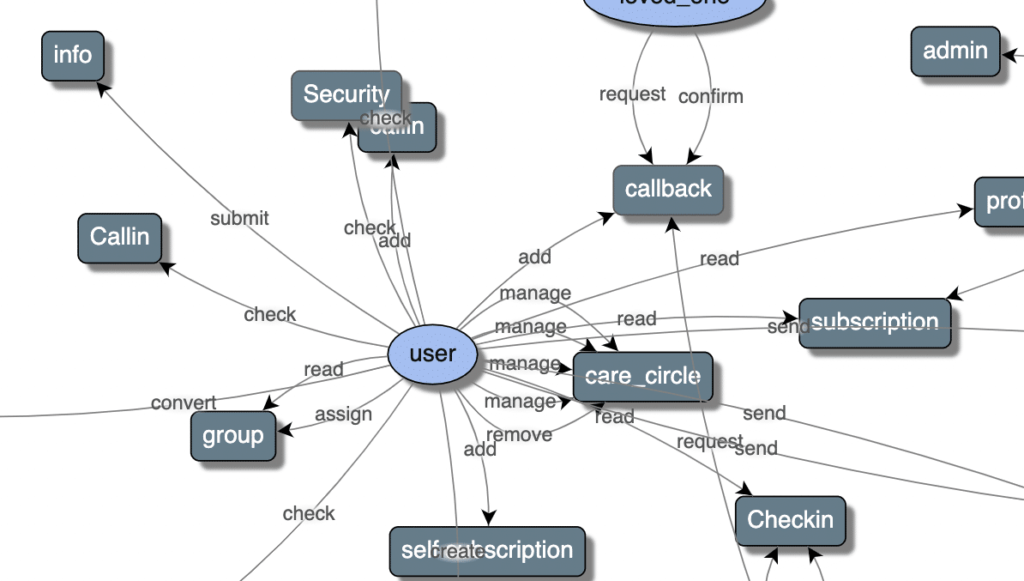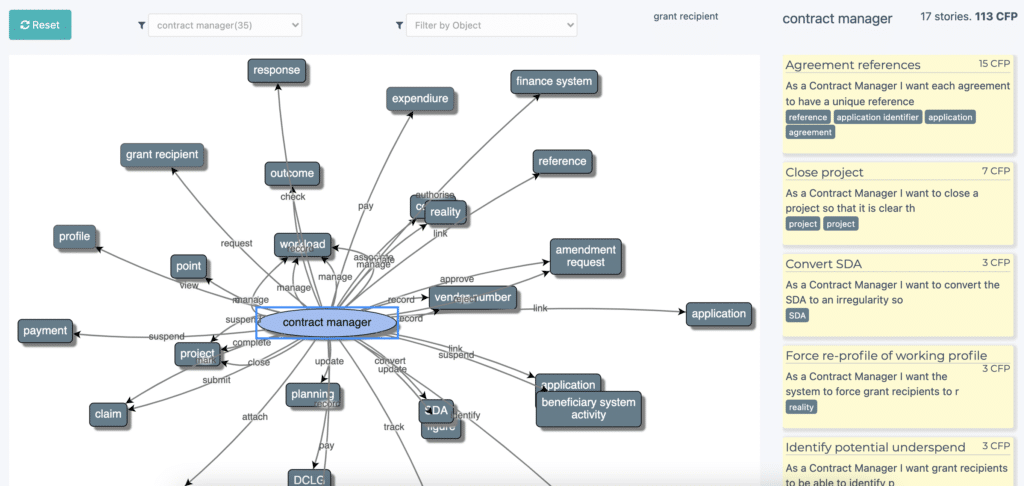What is a Use Case Diagram
A use case diagram is a drawing, an artefact that describes the user’s interactions with the system. It originates from object-oriented development and is a compact visual way of explaining what the user can do with the software. There is a formal and correct way to draw a use case diagram that ensures clarity and consistency.
Use Case Modelling
A use case model diagram is a simplification of the use case diagram. It also shows the interactions between the users and the system but simplifies the formal format. ScopeMaster generates the use case model diagram automatically from the backlog. It show the interactions between the user and object types. These diagrams are generated dynamically and can be navigated, filtered and reshaped interactively.

ScopeMaster analyses your user stories to determine the functional intent and users. It then generates a use case diagram model which you can explore.

Filter your requirements by clicking on a user. And see the subset of functionality that relates to the just that user. This is a great way to elicit requirements and enrich the conversation with the user and ensure the completeness of the capability.
In addition to doing the drawing for you, you can also:
- Filter by user type
- Filter by data type
- Filter by your own label (eg target sprint).
The benefits of this autogenerated use case diagrams are:
- Visualize the size and complexity of the entire system
- Easily spot inconsistencies
- Easily spot outliers
- Detect where the requirements are complex
- Facilitate requirements elicitation with users
There is no need to create these diagrams, ScopeMaster does it for you.
From these diagrams you can assess a set of requirements for:
Completeness: visually spot missing functionality associated with a user.
Size: Visually see the functional size of your software.
Complexity: Spot requirements complexity before it impacts your code.
Duplication: Visually spot duplicate functionality between users and objects.
